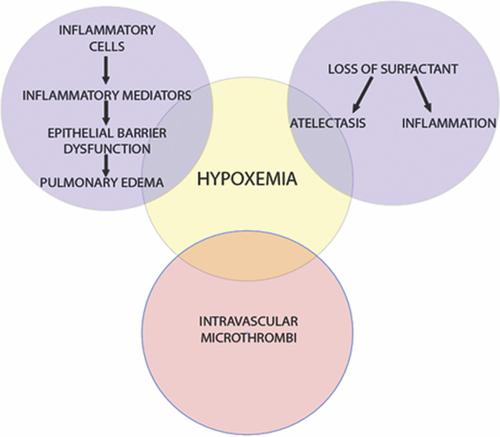当前位置:
X-MOL 学术
›
Ann. N. Y. Acad. Sci.
›
论文详情
Our official English website, www.x-mol.net, welcomes your
feedback! (Note: you will need to create a separate account there.)
Disease‐modifying treatment of chemical threat agent–induced acute lung injury
Annals of the New York Academy of Sciences ( IF 4.1 ) Pub Date : 2020-07-29 , DOI: 10.1111/nyas.14438 Jared Radbel 1 , Debra L Laskin 2 , Jeffrey D Laskin 3 , Howard M Kipen 3
Annals of the New York Academy of Sciences ( IF 4.1 ) Pub Date : 2020-07-29 , DOI: 10.1111/nyas.14438 Jared Radbel 1 , Debra L Laskin 2 , Jeffrey D Laskin 3 , Howard M Kipen 3
Affiliation

|
Acute respiratory distress syndrome (ARDS) is a highly morbid lung pathology induced by exposure to chemical warfare agents, including vesicants, phosgene, chlorine, and ricin. In this review, we describe the pathology associated with the development of ARDS in humans and experimental models of acute lung injury following animal exposure to these high‐priority threat agents. Potential future approaches to disease‐modifying treatment used in preclinical animal studies, including antioxidants, anti‐inflammatories, biologics, and mesenchymal stem cells, are also described. As respiratory pathologies, including ARDS, are the major cause of morbidity and mortality following exposure to chemical threat agents, understanding mechanisms of disease pathogenesis is key to the development of efficacious therapeutics beyond the primary intervention principle, which remains mechanical ventilation.
中文翻译:

化学威胁剂诱发的急性肺损伤的疾病改良治疗
急性呼吸窘迫综合征 (ARDS) 是一种高度病态的肺部病理,由暴露于化学战剂(包括发泡剂、光气、氯和蓖麻毒素)引起。在这篇综述中,我们描述了与人类 ARDS 发展相关的病理学以及动物暴露于这些高优先级威胁因素后急性肺损伤的实验模型。还描述了临床前动物研究中使用的疾病缓解治疗的潜在未来方法,包括抗氧化剂、抗炎药、生物制剂和间充质干细胞。由于包括 ARDS 在内的呼吸道疾病是接触化学威胁剂后发病和死亡的主要原因,因此了解疾病发病机制是开发超越主要干预原则的有效疗法的关键,
更新日期:2020-07-29
中文翻译:

化学威胁剂诱发的急性肺损伤的疾病改良治疗
急性呼吸窘迫综合征 (ARDS) 是一种高度病态的肺部病理,由暴露于化学战剂(包括发泡剂、光气、氯和蓖麻毒素)引起。在这篇综述中,我们描述了与人类 ARDS 发展相关的病理学以及动物暴露于这些高优先级威胁因素后急性肺损伤的实验模型。还描述了临床前动物研究中使用的疾病缓解治疗的潜在未来方法,包括抗氧化剂、抗炎药、生物制剂和间充质干细胞。由于包括 ARDS 在内的呼吸道疾病是接触化学威胁剂后发病和死亡的主要原因,因此了解疾病发病机制是开发超越主要干预原则的有效疗法的关键,











































 京公网安备 11010802027423号
京公网安备 11010802027423号